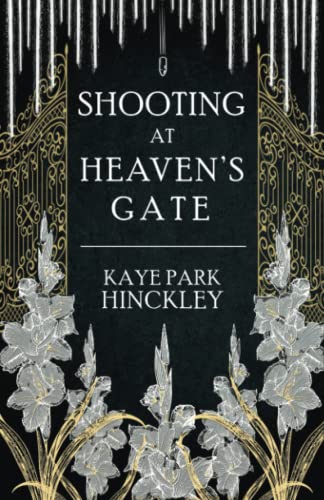In Shooting At Heaven’s Gate, Kaye Park Hinckley explores a topic that we urgently need to face, but which the public square has failed miserably to address: the trajectory of a man who suddenly decides to take a gun and kill a slew of people who may have no clear connection to him at all. This novel is a spiritual thriller in that we know very quickly who the perpetrator will no doubt be. The mystery here is the mystery of iniquity, and Hinckley sets out, through several interwoven story lines, to expose the small steps by which an innocuous boy might turn into a monstrous man.
The lists of book discussion questions and quotes at the end make clear that the intent of this novel is to illustrate an explicitly Catholic understanding of free will, temptation and Theology of the Cross (“Suffering plus Faith equals Salvation.”). There is also a second storyline, whose intersection with the first kept me guessing till the end. This sub-plot describes the opposite series of choices and demonstrates that a materialistic paradigm, in which people are merely the product of their environments, cannot be true. Hinckley carefully details opposing trajectories—toward goodness and towards evil—and shows that suffering in itself cannot be the cause of evil, because in suffering, people can still choose for what is right and good. In fact, some take on more than their share of trouble, out of love.
Hinckley’s prose is reliably mellifluous, but in this story she endows with greatest eloquence the preacher-grandfather of the perpetrator. These two characters are clearly in the line of Hazel Motes and his grandfather from Flannery O’Connor’s Wise Blood. We see the forceful preacher through the distorted memories of his devolving grandson. We realize that the grandfather attempted to inculcate righteousness in his progeny. We also find out that he gave a handgun to a little boy and pushed him in front of a couple of wild hogs, with orders to shoot. In a make-or-break paradigm, this boy evidently became one of the broken ones. Hinckley succeeds in showing that evil is not so much a thing in itself as the absence of things that should be there but are not. The ambiguous relationship between the perpetrator and his preacher grandfather was to me the most fascinating dynamic of the novel: the hazy background of a disintegrating human being.
However, younger readers will, I think, delight in the glaringly malevolent tempter (aptly nicknamed Mal!) who is foregrounded as the immediate mentor towards evil of the weak anti-hero. I plan to give this book to my ninth grader, because its careful parsing of the interior process by which a person can be led into evil—or choose goodness—is exactly the sort of resource that adolescents today so badly need. They are coming of age in a horribly evacuated culture. It is a daunting challenge to figure out how to live the Christian faith in this context, constantly made aware of grotesquely violent acts by public figures who seem determined never to examine the human heart. Kaye Park Hinckley has done us all a great service with this attempt to shine some light into a very dark and frighteningly powerful spiritual vacuum.



